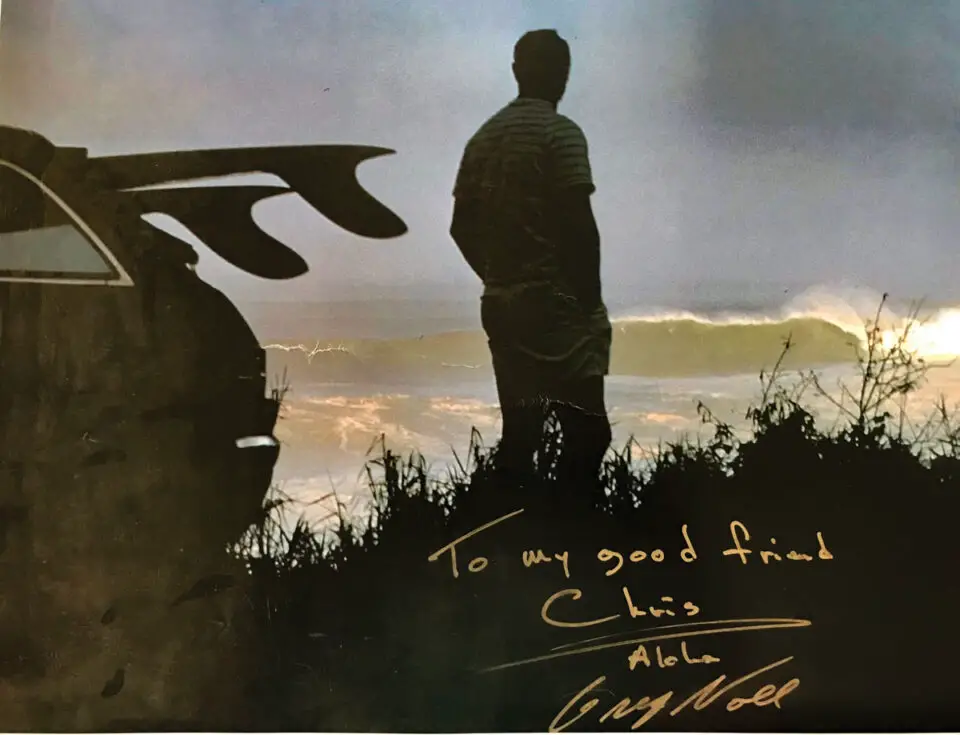All of the baseball pennants and Tijuana art had been removed from the bedroom I shared with my brother Dave.
Replacing them were a variety of surf shots clipped from the pages and centerspreads taken Surfer, Surf Guide and Surfing Illustrated, the bi-monthly and quarterly magazines that sometimes made it to the inland town of Montebello where we grew up.
I was in 9th grade and surfing, as illustrated by my redecorated room, had taken over my previously pathetic life.
Alone in my room I meditated for hours on shots of Donald Takayama and Dewey Weber laying out turn in Hermosa Beach, Lance Carson slumped with ten toes resting over the nose like he was hesitating at a red light before crossing the street, Phil Edwards dominating Makaha and Greg Noll falling into the pit of the biggest wave I had ever imagined.
While the others hanging from the drywall replaced Mickey Mantle, Hank Aaron and Don Drysdale in my newly discovered world, Noll was the new Babe Ruth — a big man who shattered records one pitch and, for Greg, one wave at a time.
I prefer small waves but for Noll, it could never get big enough. For that reason, I never did see Greg surf in person.
Still, he brought the house down each time he co-starred in a surf movie at the Santa Monica or Pasadena Civic Auditoriums.
During the “shortboard revolution” of the late ‘60s, Greg Noll Surfboards adjusted and stayed in business. He continued surfing, but his reign in the big-wave arena was over.
The world had pretty much turned away from big waves and concentrated instead on performance surfing, which was generally accomplished on waves eight feet and under.
When the surfboard business began to fade in the late ‘60s, Greg went fishing on his boat before slipping into Crescent City where he fished commercially for 15 years and found solitude near a river rife with migrating salmon.
We didn’t see Greg again until after the cycle spun again and longboards made their return to the surfing world.
It must have been some time in the early 1980s when I saw Greg and his wife, Laura at an Action Sports Retailers (ASR) show in San Diego.
Many of those on hand were young and therefore failed to recognize him, but I had memorized that face and so shyly walked up to where he was seated to shake his hand.
I walked away buzzing that I had met one of surfing’s all-time greats.
It must have been around 1990 when Greg returned to the scene with a display of beautiful collectible surfboards he had handcrafted in his workshop, posters and, eventually, a line of T-shirts and shorts under the “Da Bull” label.
That was right around the time I took the helm of the short-lived, Longboarder Magazine, where one of my primary duties was to interview surf legends like Greg Noll.
These interviews with Greg led to a decades-long friendship, usually kept alive through long-distance calls when he telephoned to ask my opinion on some new project he was cooking up.
During all that time he was always open, friendly, funny and self-deprecating, saying things like, “I feel like I’m table dancing with my skirt hiked up around my waist,” indicating his occasional discomfort with his salesmanship.
Noll’s taking me into his confidence made me feel special, even though he treated most people he knew for a while with the same respect.
I got the call on Monday, June 28, of this year saying that Greg Noll had passed away that day.
The news hit me like a Waimea wipeout.
Still, the Bull lives on, standing tall among the mortals who usually shine for a while before their star begins to fade.
Greg Noll is survived by his wife, Laura, daughter Ashlyne, and sons Jed, Tate and Rhyn.




